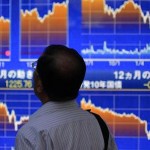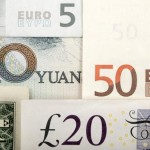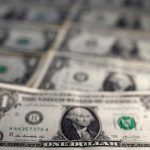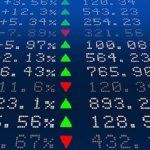Asian shares sank on Friday; The dollar index against a basket of six major currencies was flat
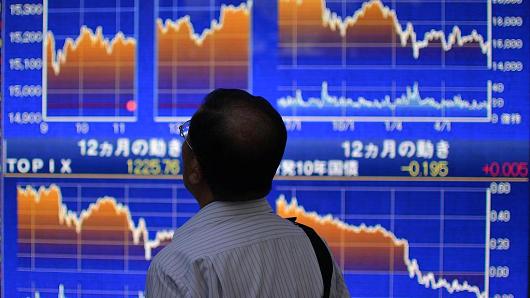
Asian shares sank on Friday, with Chinese equities on track for their worst day in two years, as fears of higher U.S. interest rates shredded global investor confidence.
There was limited immediate market reaction to the U.S. government staggering into another shutdown after Congress missed a Thursday midnight deadline to renew funding.
S&P mini futures retained modest gains and were last up 0.4 percent.
Spreadbetters expected Europe markets to start lower, forecasting an 0.8 percent drop for Britain’s FTSE, and declines of 0.2 percent for Germany’s DAX and France’s CAC.
On top of pressure from the drop in global shares, Chinese equities were weighed down as investors sought to stay liquid ahead of the Lunar New Year holidays and pressure was felt to meet rising margin calls.
The Shanghai Composite Index tumbled 6.0 percent to its lowest since May 2017, and the blue chip CSI300 index dived as 6.1 percent. Both indexes were on track for their largest single-day losses since February 2016.
Frank Benzimra, head of Asia equity strategy at Societe Generale in Hong Kong, said Chinese shares slid mostly because of the U.S. correction but he had some China-specific worries.
He said he now is neutral on China equities “due to two concerns: valuations on China-consumer related industries and execution risks on deleveraging (more specifically financial deleveraging)”.
Japan’s Nikkei shed 2.9 percent, en route for a weekly loss of 8.6 percent – its biggest since February 2016.
MSCI’s broadest index of Asia-Pacific shares outside Japan dropped 2.2 percent to a two-month low.
The index, which hit a record high on Jan. 29, was on track for its sixth straight day of losses and stood to fall 7.6 percent on the week.
“The correction phase in equities could last through February and possibly into March,” said Masahiro Ichikawa, senior strategist at Sumitomo Mitsui Asset Management in Tokyo.
“The rise in long-term U.S. yields will have to settle for the correction phase to end. The surge in volatility has also prompted investors to sell risk assets, in turn feeding volatility.”
U.S. markets remained the epicenter of the global sell-off, with the Dow plunging 4.1 percent and the S&P 500 sinking 3.7 percent overnight.
With Thursday’s losses, both the S&P 500 and the Dow slid into correction territory, falling more than 10 percent from record highs of Jan. 26.
Higher yields are seen hurting equities as they increase borrowing costs for companies and reduce their risk appetite. They also present a fresh alternative to investors who may reallocate some funds to bonds from equities.
The yield on the benchmark 10-year Treasury note rose as high as 2.884 percent on Thursday, just below Monday’s four-year high of 2.885 percent. It last stood at 2.8310 percent.
Treasury yields were pushed higher after the Bank of England said British interest rates probably need to rise sooner, adding to expectations of reduced central bank stimulus globally, compounded by U.S. Senate leaders agreeing to a budget deal that would increase government borrowing.
Treasury yields have been shoved up by the prospect of increased debt issuance to fund fiscal spending under U.S. President Donald Trump, inflation worries, and expectations of the Federal Reserve raising rates sooner and more frequently than was expected.
“An increase in fiscal spending ahead of the U.S. midterm elections has caused the Fed to brace for inflation accelerating and the economy overheating. This led yields higher, ultimately triggering the fall in equities,” said Yoshimasa Maruyama, chief market economist at SMBC Nikko Securities in Tokyo.
It could be up to new Fed Chair Jerome Powell to restore calm in the financial markets, he said.
In currencies, the dollar edged up 0.2 percent to 108.985 yen , after slipping 0.5 percent overnight. For the week, it was on track to lose 1.5 percent against its Japanese peer amid risk aversion in broader markets.
The Swiss franc dipped 0.2 percent to 0.9383 franc per dollar after advancing about 0.7 percent the previous day.
The euro added 0.1 percent to $1.2259 .
The dollar index against a basket of six major currencies was flat at 90.249 after touching a two-week high of 90.567 overnight.
The pound rose 0.1 percent to $1.3933 . It had reached $1.4067 overnight following the hawkish BoE comments.
U.S. crude futures were down 1.1 percent at $60.53 per barrel after hitting a seven-week trough of $60.27 on Thursday amid fears of rising global supplies after Iran announced plans to increase production and U.S. crude output hit record highs.
Brent crude fell 0.7 percent to $64.37 per barrel.
Source: Reuters – Asia hit by Wall St’s tumble, China stock indexes lose 6 percent









